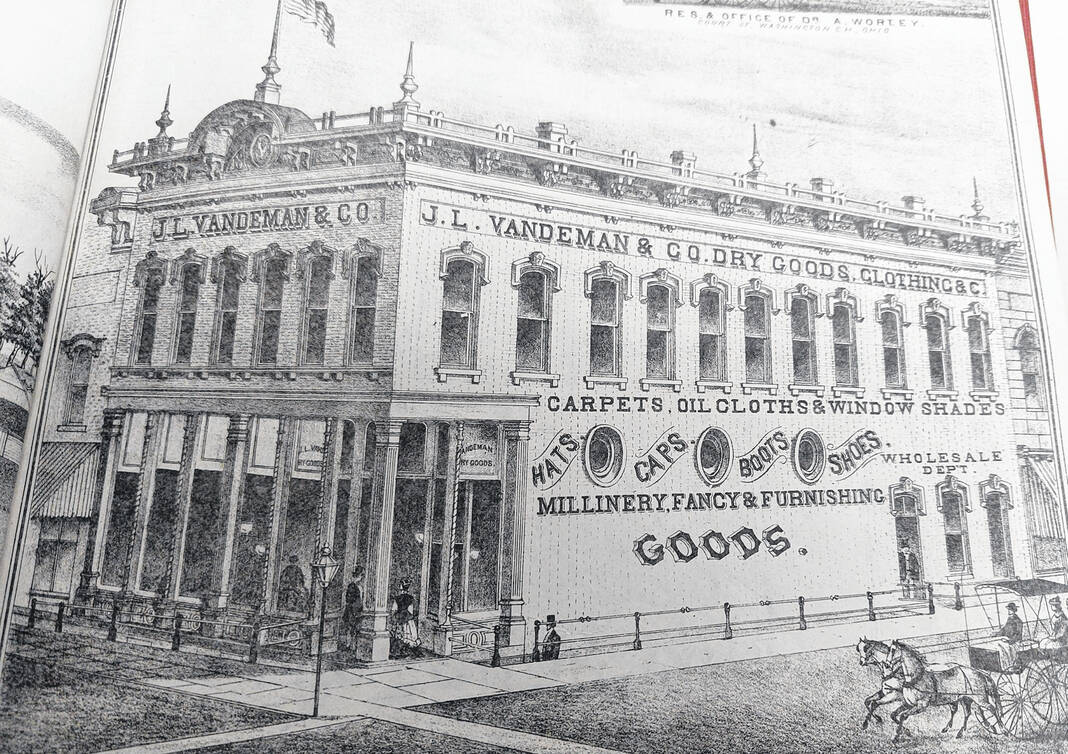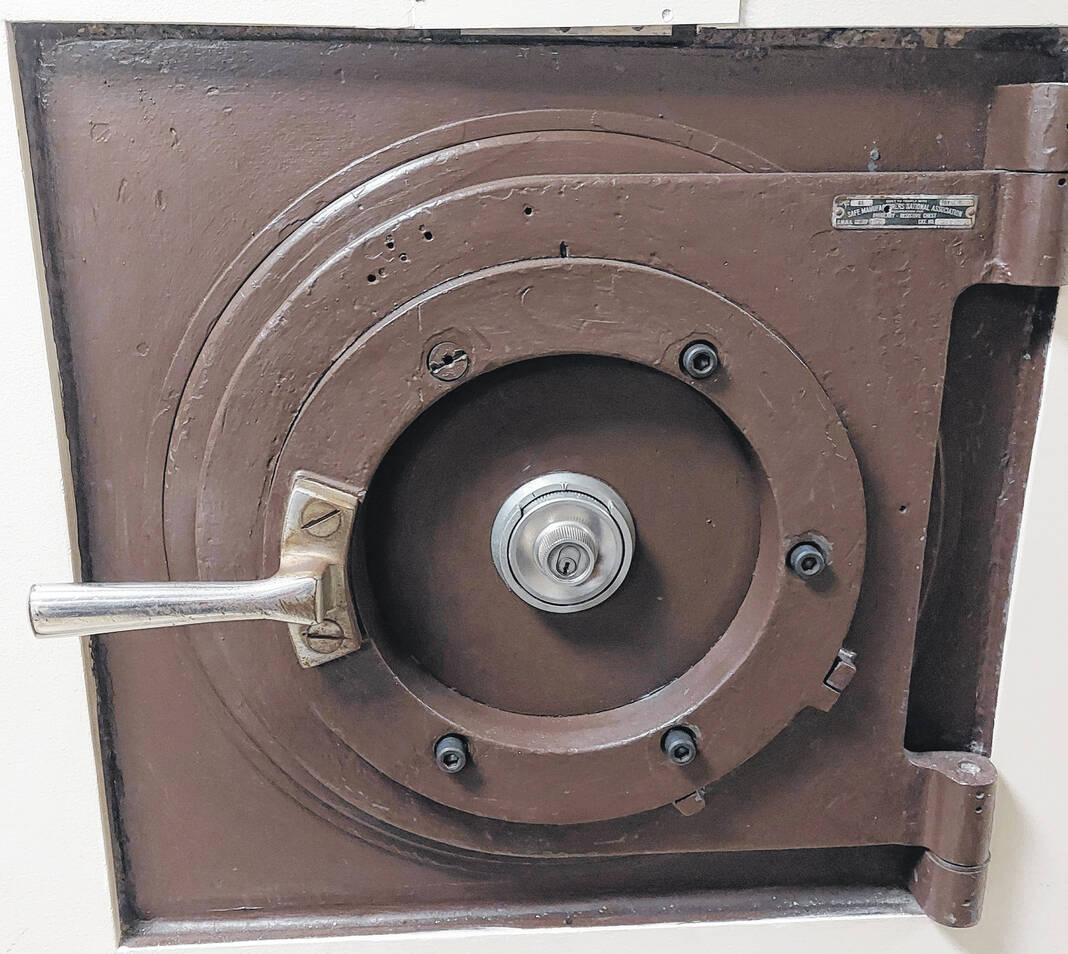
Sonia Haithcock has been the victim advocate for the City of Washington Court House for 19 years.
Gail Allen | R-H photos

The Vandeman Block was built in 1873 on the corner now occupied by the City Administration Building, 105 N. Main St.

The current look of Main Street at Court Street, formerly known as the Vandeman Block.

The historic wall safe used by the banking facilities formerly occupying the current administration building for the City of Washington.
WASHINGTON COURT HOUSE — The Victim Witness office in the City of Washington, run out of the city attorney’s office, is assigned to the Washington Municipal Court. Sonia Haithcock has been the victim advocate for 19 years and works with victims affected by all types of crimes brought to the municipal court.
Due to many renovations that recently took place in the municipal court building on Main Street, Haithcock’s office was moved to the administration building, second floor, 105 N. Main St., early last month.
Haithcock said that victims can be severely affected by physical abuse, property crimes, such as theft or damage, and she assists victims through their court experience. She assists victims in getting protection orders, if necessary, to protect themselves from further harm. Sometimes victims have shelter needs and she works with the Peace House regarding physical abuse cases, programs like obtaining food stamps, and gathering medical bills after a hospital event for any domestic violence crimes.
Haithcock is responsible for keeping the victim separated from the accused during the court process, even though the victim is not required to attend all phases of the prosecution, such as arraignment, but must be present for any trial.
Haithcock said, “since the passage of Marsy’s Law for All, there is a lot more to do being an advocate.”
Marsy’s Law in Ohio was passed in November 2017 and ensures that victims of crime have equal, constitutional rights on the same level as those accused or convicted of crimes.
Anyone can be a victim of crime, regardless of gender, age, disability, etc., and too often victims feel they have no voice in the criminal justice system. It is Haithcock’s job to help the victim’s voice be heard.
As Haithcock was getting settled into her new office, she began to worry about walking from the front door of the administration building to the municipal court building down the street in very bad weather, she said. She learned she had an alternative through the basement access tunnel.
The administration building has a basement tunnel that winds from under the water department office, across under the tax office, and ends at a stairway now going up into the clerk’s office in the municipal court. The tunnel winds around with left and right turns and through doors in a maze of history.
The original building on that block was built in 1873 and called the Vandeman Block. The J.L. Vandeman & Co. Dry Goods store first occupied that site. In later years the J.C. Penney Co. had a store in that block, between the now administration building and the now municipal court.
As you wind through the tunnel, there is a large concrete “stairway to nowhere,” according to Haithcock, which is now covered over by a floor in the old J.C. Penney basement area.
However, the first sight after exiting the elevator in the basement under the administration building is a large wall safe of historical proportion.
According to the “History of Fayette County” book by F. Allen at the library, the first bank in Fayette County was the Fayette County Bank established in 1858 on the north side of Court Street near Fayette Street. Their assets were later transferred to the First National Bank of Washington Court House in 1864.
According to the Map Office of Fayette County, in 1943, the First National Bank owned the building now known as the administration building and having a basement wall safe was probably a banking decision for protection of assets back then. In 1984, the bank was renamed BancOhio National Bank at that location. The City of Washington took over the building in 1996. History remains under the building as a tunnel and walkway through the days of old and memories of past generations.

